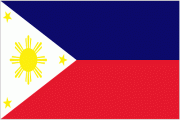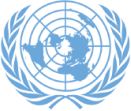Good morning, Ambassador Carazo, Excellencies and colleagues.
As a megadiverse country, the Philippines is proud to be part of this important high-level discussion to commemorate the International Day for Biological Diversity.
The Philippine Biodiversity Strategy and Action Plan (2015-2028) is our road map to conserve our rich and unique biodiversity. It’s vision is to have, by 2028, “a biodiversity that is restored and rehabilitated, valued, effectively managed and secured, maintaining ecosystem services to sustain healthy, resilient Filipino communities and delivering benefits to all.”
Pursuant to this roadmap, we have achieved concrete milestones. Among these are: a) the enactment of a law that expands our protected areas and mobilizes government resources to conserve and protect ecologically-rich and unique areas; b) the successful establishment of area-based conservation measures with the active engagement and support of local government agencies; c) establishment of safeguards in the implementation of infrastructure projects in protected areas to eliminate or minimize the risk of biodiversity loss; and d) legislation that mandates all government agencies to integrate biodiversity into their development plans and programs, providing the policy environment for mainstreaming biodiversity across sectors.
To ensure that the post-2020 Global Biodiversity Framework contributes to the 2030 Agenda for Sustainable Development, we wish to highlight the inclusion of the following crucial elements:
First, the obligation to maintain existing ecosystems – forests, coastal and marine, wetlands and agroecosystems - and to keep them intact, or at least maintain their viability against human encroachment and developmental activities. This obligation comes in addition to expanding the coverage of these ecosystems through aggressive restoration and rehabilitation activities to prevent the spill-over of zoonotic diseases, including their carriers, into human settlements, peri-urban areas and urban areas;
Second, the need to focus on coral reef areas, recognizing the unique vulnerability of coral reefs to anthropogenic impacts, including global threats from climate change and ocean acidification, as well as local impacts such as the inputs of nutrients and sediments from agriculture, including from land-based and sea-based pollutions, overfishing and destructive fishing practices;
Third, the need to intensify measures in addressing habitat destruction, illegal wildlife trade and climate change. As we draw a collective response to the global pandemic caused by COVID-19, we need to strengthen cooperation and partnerships to end the illegal wildlife trade and halt further degradation of our remaining ecosystems. With forests and coastal and marine areas constantly encroached upon, and wildlife forcibly driven or taken out of their natural habitats, the threat of zoonotic diseases will continue to loom over us;
Fourth, the exigency to implement and support efforts to mainstream biodiversity across the production landscapes and extractive resource sectors. This will pave the way for more nature-based solutions in ensuring that drivers to biodiversity are addressed. Increasing initiatives related to biodiversity-friendly activities in businesses, infrastructures, agriculture, mining and energy are good barometers of achieving our conservation and sustainable development goals; and
Fifth, to build back better and prevent the recurrence of virulent pandemics by, among others, strengthening surveillance systems through centralized GIS mapping, deployment of new technologies, broadening research and intensifying information drives, and improving public health systems.
I wish to share that the Association of South East Asian Nations (ASEAN) has already submitted its initial inputs to the post-2020 Global Biodiversity Framework. In our regional consultations, it was underlined that “biodiversity is where we get our food, ingredients for medicine, materials for clothing and shelter, and raw materials for businesses and industries. Biodiversity is interconnected with all development sectors.”
To conclude, as we mark International Day for Biological Diversity, we remind humanity that “our solutions are in nature.” We continue to work on our ambitions for the planet, but we also do not forget, we are accountable for every action we take.
Thank you.
* * *


